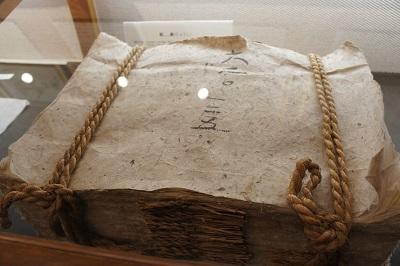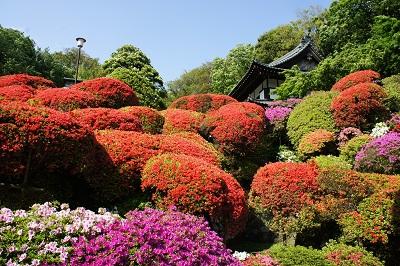[Dharma]
May 12, 2017 14:00
In the gallery on the 2nd floor of Ozu Washi, Chuo-ku Machikado Exhibition Hall
"The world of Hyakunin Isshu 8 centimeters woven by Japanese paper and cotton swabs" is being held.
Date: May 02 to May 13, 2017 (Sat)
Time From 10:00 to 17:00 (final day: until 14:00)
↓ Hyakunin Isshu Heian Orinpuku

 The face and body are cotton swabs, and the costumes are 8 cm dolls made of colorful Japanese paper, and you can feel gentleness, beauty, and vitality together.
The face and body are cotton swabs, and the costumes are 8 cm dolls made of colorful Japanese paper, and you can feel gentleness, beauty, and vitality together.
The starting point for making Japanese paper dolls was when the creator, Toshiko Ito, met a disabled doll during the illness of the eldest son of muscular dystrophy and his second son. In addition, the work group that reproduces the scene of the song of Hyakunin Isshu with an 8 cm Japanese paper doll expresses the thoughts of Mr. Ito's deceased two sons.
It was a story of the executive committee of "Japan woven by Washi".

[Dharma]
May 9, 2017 14:00
"Ozu Washi" is an Australian merchant from Ise and has been involved in the history of Washi for more than 360 years since opening a paper merchant in Temmacho, Edo Dai. On the 3rd floor "Ozu Historical Museum", the cargo of handmade Japanese paper "choshi" (Machiya's business and daily use) sent from Echizen around the beginning of the Meiji era (48 sheets, 30 sheets = 1152 sheets, 3.5 kg) is on display.

Echizen Washi has a long history of 1500 years. Masayoshi Iwahara contributed to the Echizen Washi Lovers Association "Washi no Sato" to introduce a sentence of the paper "How Echizen Washi in the Edo period was sent to the three major consumption areas" ... [Edo period paper trade is said to be the second only to rice and wood, but Echizen Washi washi was also sent in large quantities to the large consumption area Edo. Transport can be broadly divided into land and sea transport. Papers from the Shogunate and the Fukui clan Edo were carefully sent by land. After the mid-Edo period, it is sent to Edo using various boat transportation in consideration of safety and economic efficiency. In 1844 (1844), when a fire broke out from Oku and the Edo Castle Honmaru disappeared, the Fukui clan donated 300,000 bird paper to the Shogunate for a fire visit (equivalent to 300,000 yen in terms of current monetary value). The paper produced estimated that 7,500 sheets were made into one horse (within 120 kg of public use), and was carried by horse across the Oi River with a large number of heads and manpower]....。 Fukui is more than 500 kilometers away from Edo. I think Echizen Washi has exerted various powers on industry, education, and culture formation from Edo to the middle of the Meiji era, from public paper, publications, ukiyo-e, etc. to living paper.
[Dharma]
May 5, 2017 18:00
Chisen-in Temple at Kayabacho Tendai sect Temple was widely known under the name of Kayabacho Yakushi during the Edo period, and it is said that it attracted the worship of the common people. The statue of Yakushi Nyorai in main deity is now enshrined at Tokaku-in Temple, a Tendai sect temple in Miyamae-ku, Kawasaki, partly due to the destruction of the Buddha in Meiji period.
The main deity of Tokakuin is secret Buddha Acalanatha, but the statue of Yakushi Nyorai is designated as an important historical monument of Kawasaki City. This is a prayer for "famous places of azalea" and "healing asthma", and it is also a walking course for Kawasaki citizens.

 The face and body are cotton swabs, and the costumes are 8 cm dolls made of colorful Japanese paper, and you can feel gentleness, beauty, and vitality together.
The face and body are cotton swabs, and the costumes are 8 cm dolls made of colorful Japanese paper, and you can feel gentleness, beauty, and vitality together.

